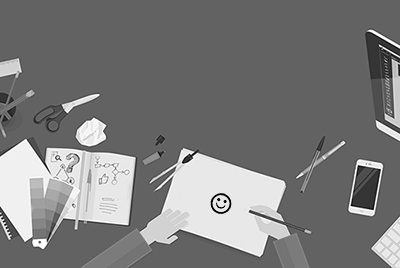-
Design and Development
‣Inspiration
Keep a gallery of all of the things that inspire you visually. These can be photos, videos, posters, T-shirts and websites; anything that may spark ideas for a solution to the particular design problem you're facing.
‣Brainstorming
Make a list of ideas that you have after your research of inspiration done.
‣Sketches
Sketching helps you think about content, hierarchy and flow among other aspects. Sketches are cheap, easy to do and very fast.
‣Wireframe
A wireframe is a visual representation of a website. The wireframe shows the placement of page features like the header, footer, navigation, and content.
-
Speed and Scalability
‣Mobile First
It's easy enough to put together a design for a web site when you're the only person who's viewing it. When it's live on the web, it'll be showing up on screens of all shapes and sizes in various web browsers. Before you're done, you want to test and make sure things look the way you want.
‣Optimizing Images
Image optimization is using the most compressed (smallest file size) yet visually acceptable image in the proper file format for the specific role of the image, this is often overlooked by web desginers.Download time, is still a major factor in a sites success.
-
Easy-to-use Applications
‣Little Information
A user’s short term memory can only retain 5-9 things at a time. Keep your list items & navigation menus within 5-9 range. Any list beyond this may have a user loosing focus. We read first few lines of the page then scroll down looking for some relevant keywords and then leave. Inverted pyramid is a content writing technique, wherein you present your user with your conclusions/most important information first.
‣Confusion
You do not want to confuse your user on where to go to next. Keep it simple and easy to navigate.
‣Crowding
Don't put too much information into one site. Keep it simple and to the point you are trying to get at.
-
I M E
‣Have fun!
Design isn't just the façade; it's the personality beneath. For some reason, design has a stigma as solely the visual part of the website. This couldn't be more false or misunderstood. Design is the entire experience from the moment users enter your site to well after they've left.Design is the 'how' and 'why' people want to use the site; the speed at which the site loads; the interaction between hover, click and touch; and the pace at which you deliver new features and content. All of these concepts comprise design.
Because design is more than visual aspects and affects the entire experience, every person on a project is a designer. Any team member who sets out to discover how the user interacts with the site is a designer. The frontend, backend and project management should all be thinking about design.
-
Process
